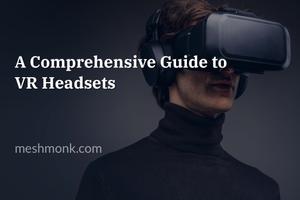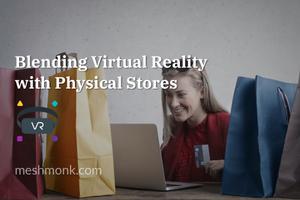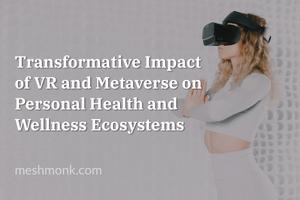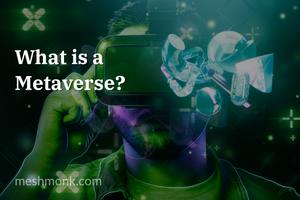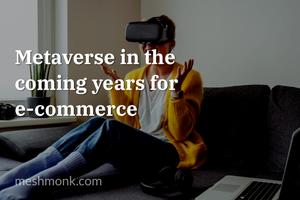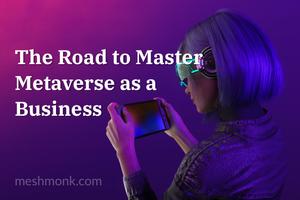Transformative Impact of VR and Metaverse on Personal Health and Wellness Ecosystems
In recent years, the realms of Virtual Reality (VR) and the Metaverse have expanded at an astonishing pace, revolutionizing various aspects of our lives. One area where these technologies have showcased immense potential is in personal health and wellness ecosystems. By seamlessly blending the virtual and physical worlds, VR and the Metaverse are reshaping the way we approach healthcare, fitness, mental well-being, and overall lifestyle choices. In this blog, we delve into the transformative impact of VR and the Metaverse on personal health and wellness ecosystems, highlighting the advancements made and the possibilities that lie ahead.
1. Enhanced Healthcare and Treatment
Virtual Reality has emerged as a valuable tool for healthcare professionals and patients alike. It enables immersive experiences that can alleviate pain, reduce anxiety, and enhance therapeutic outcomes. VR applications are being utilized for pain management, physical rehabilitation, exposure therapy for phobias, and even surgical training. By simulating scenarios and environments, VR offers a safe and controlled space for patients to confront their fears, recover from trauma, and learn coping mechanisms.
2. Fitness and Exercise
VR fitness experiences have witnessed a significant rise, catering to individuals seeking engaging and dynamic workout routines. With VR headsets and motion controllers, users can participate in interactive games, dance workouts, martial arts simulations, and more. These experiences transform exercise into an enjoyable activity, motivating individuals to stay physically active and achieve their fitness goals. Additionally, VR can provide personalized workout tracking and analysis, offering users real-time feedback on their performance.
Here are some examples of how VR is shaping fitness and exercise:
-
Interactive Workouts: VR fitness experiences offer a wide range of interactive workouts that blend physical activity with immersive gameplay. Users can engage in virtual sports such as tennis, boxing, or basketball, where they physically move and swing their arms to play the game. These experiences provide a full-body workout while keeping individuals entertained and motivated.
-
Dance and Rhythm Games: Virtual reality dance and rhythm games have gained popularity as a fun and energetic way to get active. Users follow dance routines or hit musical notes in sync with the rhythm, promoting cardiovascular fitness and coordination. Examples include games like Beat Saber, where players wield virtual lightsabers to slice through musical blocks, or Dance Central, which offers a virtual dance party experience.
-
Fitness Classes: VR platforms offer virtual fitness classes led by professional trainers, bringing the expertise of instructors directly into users’ homes. Whether it’s yoga, Pilates, HIIT (High-Intensity Interval Training), or cardio workouts, users can join virtual classes and follow along with real-time guidance and feedback. This provides the convenience of home workouts with the benefits of expert-led instruction.
-
Virtual Reality Cycling: VR cycling combines stationary biking with immersive virtual environments, taking users on virtual rides through scenic landscapes or challenging terrains. Users can choose from various routes and difficulty levels, and the VR headset provides an immersive visual experience, enhancing the feeling of outdoor cycling. Some platforms even offer multiplayer options, allowing users to compete or ride together with friends.
-
Personalized Fitness Tracking: VR fitness applications often incorporate personalized tracking features that monitor users’ movements and provide real-time feedback on their performance. Metrics such as calories burned, heart rate, and distance traveled can be displayed within the VR environment, enabling users to track their progress and set fitness goals. This data-driven approach enhances accountability and motivates individuals to push themselves further.
-
Virtual Personal Trainers: Virtual personal trainers within VR platforms offer personalized guidance and coaching during workouts. These virtual trainers can provide instructions, correct form, and offer motivational cues, simulating a real-life personal training experience. Users can receive tailored workout routines and receive feedback on their technique, helping them optimize their workouts and achieve better results.
-
Gamified Fitness Challenges: VR fitness applications often incorporate gamification elements, turning workouts into challenging and rewarding experiences. Users can earn points, unlock achievements, and compete on leaderboards, fostering a sense of competition and accomplishment. These gamified elements make workouts more engaging and encourage users to push their limits.
The integration of VR into the fitness and exercise realm has the potential to revolutionize the way people approach physical activity. By making workouts more enjoyable, interactive, and personalized, VR enhances motivation, adherence, and overall fitness outcomes. It opens up new possibilities for individuals to achieve their fitness goals while immersing themselves in virtual worlds.
Companies leveraging virtual reality devices for healthcare purposes
| Company/Initiative | Description | Website |
|---|---|---|
| AppliedVR | AppliedVR focuses on utilizing virtual reality for pain management and behavioral healthcare. Their VR platform offers immersive content and tracking capabilities to support therapeutic interventions. | AppliedVR |
| VRHealth | VRHealth combines virtual reality and healthcare to provide solutions for pain management, physical rehabilitation, and cognitive training. Their VR platform includes applications for chronic pain management, physical therapy exercises, balance training, and cognitive assessments. | VRHealth |
| Firsthand Technology | Firsthand Technology develops VR solutions for pain management, rehabilitation, and mental health. Their VR platform, COOL!, offers immersive experiences designed to reduce pain perception and promote relaxation. The system tracks physiological responses to help individuals manage their pain. | Firsthand Technology |
| Karuna Labs | Karuna Labs focuses on using VR for chronic pain management and physical rehabilitation. Their VR system provides immersive experiences targeting neuroplasticity and pain modulation. The platform tracks user movements and offers personalized treatment programs for conditions such as musculoskeletal pain and neuropathic pain. | Karuna Labs |
| MindMaze | MindMaze develops neurorehabilitation solutions that incorporate virtual reality for stroke recovery and traumatic brain injury rehabilitation. Their VR system tracks user movements and provides immersive environments for motor relearning and cognitive training. The platform enables personalized therapy sessions and progress monitoring. | MindMaze |
| Oxford VR | Oxford VR specializes in using virtual reality for mental health treatments, particularly for anxiety disorders and social avoidance. Their VR therapy programs offer exposure-based treatments within immersive environments. Oxford VR tracks users’ physiological responses and behavior, providing personalized therapy and progress tracking. | Oxford VR |
3. Mental Health and Well-being
The Metaverse, with its vast virtual landscapes and social interactions, has become a refuge for mental health support and well-being. Virtual communities and platforms allow individuals to connect, seek peer support, and share their experiences without the fear of stigma or judgment. In virtual environments, individuals can engage in relaxation exercises, meditation, and mindfulness activities to reduce stress and improve mental clarity. Moreover, therapists and counselors can employ VR to create immersive environments for exposure therapy and desensitization, treating conditions such as anxiety disorders and post-traumatic stress disorder (PTSD).
Before 2020, just 43% of healthcare facilities had the ability to provide remote treatment to patients. Today that figure stands at 95%.
Source: forbes.com
4. Healthy Lifestyle Choices
VR and the Metaverse offer unique opportunities to promote healthier lifestyle choices. By simulating various scenarios, users can explore alternative realities that encourage positive habits. For instance, virtual environments can provide interactive cooking lessons, where users learn to prepare nutritious meals and develop healthier eating habits. Additionally, VR simulations can recreate outdoor environments, encouraging individuals to spend more time in nature, which has been linked to improved mental and physical well-being.
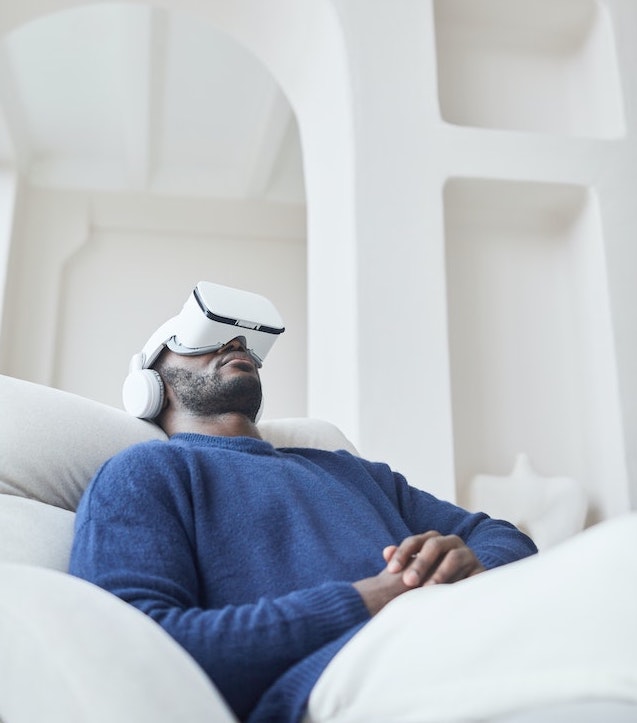
5. Remote Healthcare and Telemedicine
The combination of VR and the Metaverse has the potential to revolutionize remote healthcare and telemedicine. With VR headsets and haptic feedback technology, patients can engage in virtual consultations with healthcare professionals, eliminating geographical barriers and enhancing accessibility to quality care. Remote monitoring through VR can track vital signs, collect patient data, and provide real-time insights for healthcare providers. This technology enables efficient and cost-effective healthcare delivery, particularly for those in remote or underserved areas.
6. Health Education and Training
VR and the Metaverse have immense potential in the field of health education and training. Medical students can utilize VR simulations to practice complex procedures, refine their surgical skills, and gain hands-on experience in a safe and controlled environment. Similarly, healthcare professionals can engage in virtual conferences, workshops, and training sessions to stay updated with the latest advancements in their respective fields. This immersive training approach enhances knowledge retention and fosters a deeper understanding of medical concepts.
Virtual Reality and the Metaverse are transforming personal health and wellness ecosystems, offering innovative solutions and empowering individuals to take control of their well-being. From healthcare and treatment to fitness, mental





